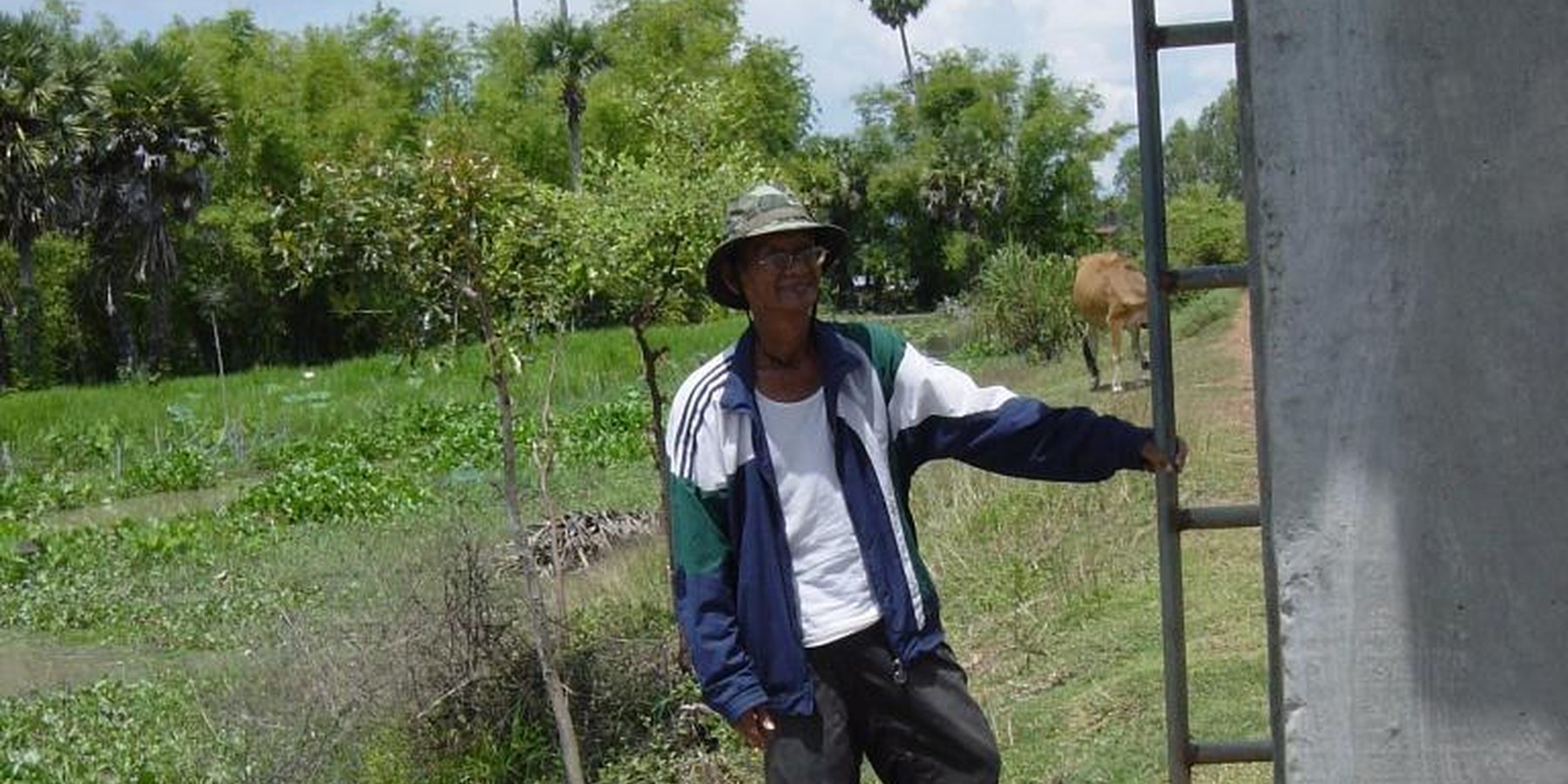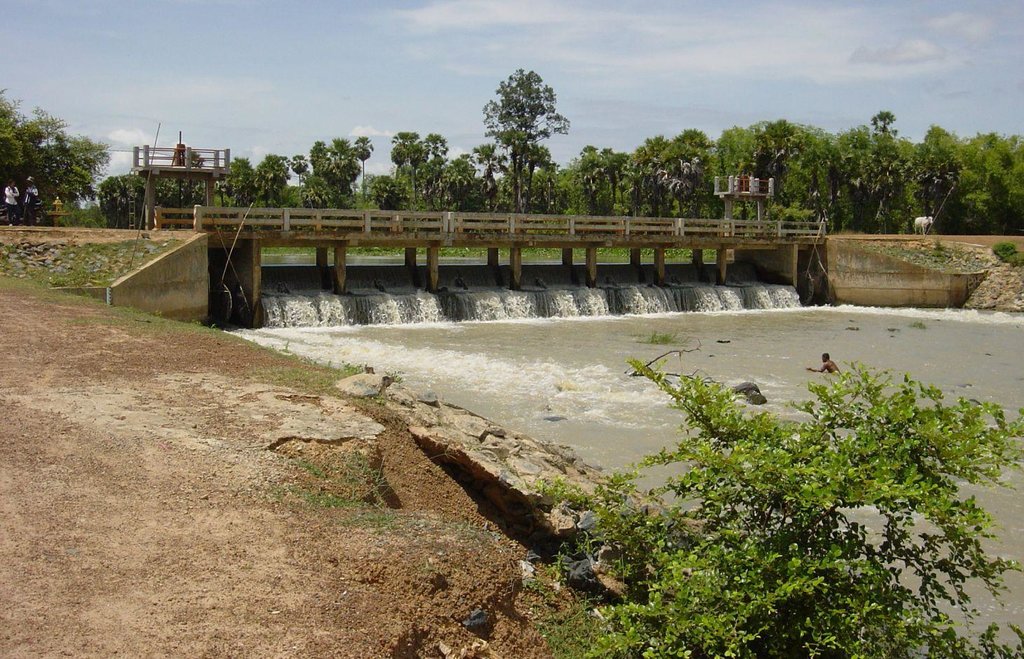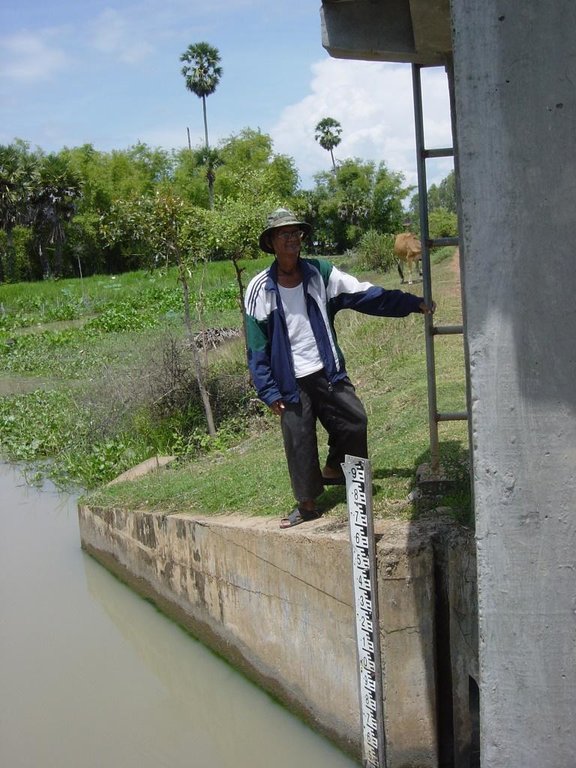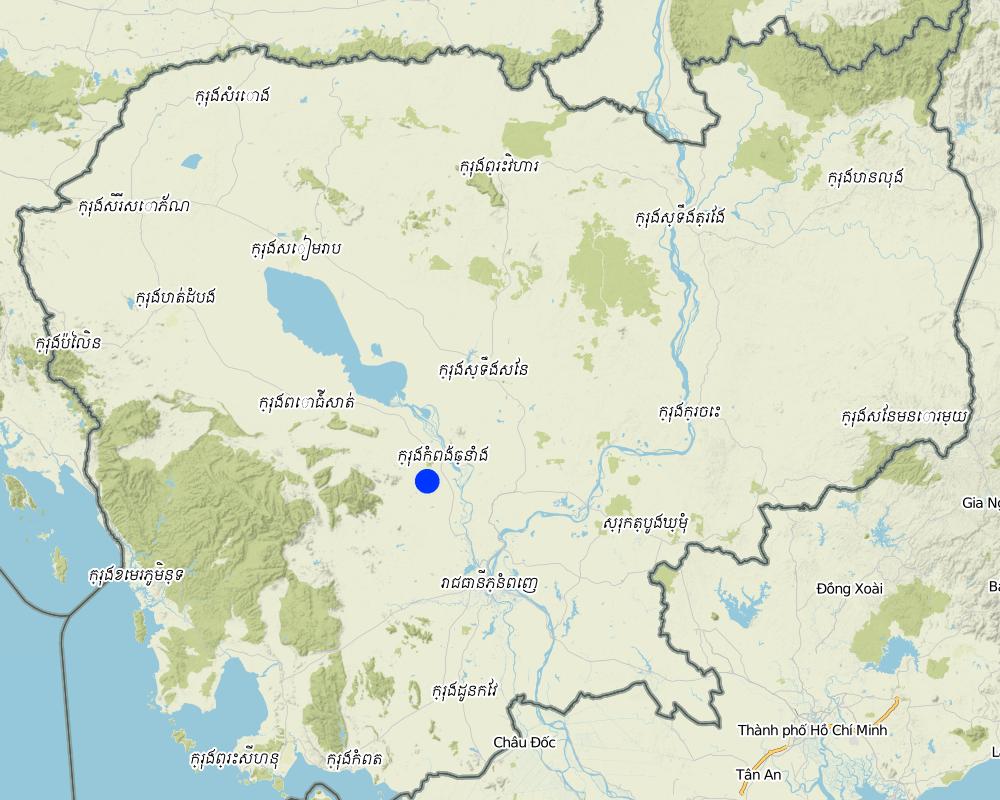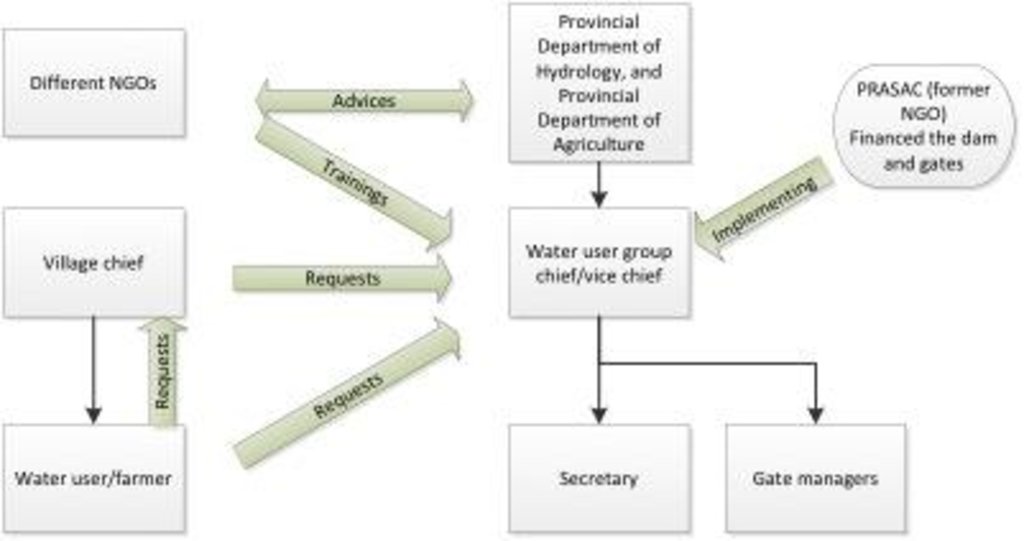Water user group [كمبوديا]
- تاريخ الإنشاء:
- تحديث:
- جامع المعلومات: Stefan Graf
- المحرر: –
- المُراجع: David Streiff
ក្រុមប្រើប្រាស់ទឹក (Khmer)
approaches_2595 - كمبوديا
عرض الأقسام
توسيع الكل طي الكل1. معلومات عامة
1.2 تفاصيل الاتصال بالأشخاص الرئيسيين لمصدر المعلومات والمؤسسات المعنية بتقييم وتوثيق النهج
متخصص في الإدارة المستدامة للأراضي:
Pith Khonhel
Local Agriculture Research and Extension Centre LAREC
كمبوديا
متخصص في الإدارة المستدامة للأراضي:
Bin Sreytouch
Society for Community Development in Cambodia SOFDEC
متخصص في الإدارة المستدامة للأراضي:
Khun Lean Hak
kleanghak@yahoo.com / sofdec@camintel.com
SOFDEC/LAREC
كمبوديا
اسم المؤسسة (المؤسسات) التي سهلت توثيق/تقييم النهج (إذا كان ذلك على صلة)
Society for Community Development in Cambodia (SOFDEC) - كمبوديااسم المؤسسة (المؤسسات) التي سهلت توثيق/تقييم النهج (إذا كان ذلك على صلة)
Local Agricultural Research and Extension Centre (LAREC) - كمبوديا1.3 الشروط المتعلقة باستخدام البيانات الموثقة من خلال WOCAT
متى تم تجميع البيانات (ميدانيا)؟:
09/09/2014
يوافق جامع المعلومات والشخص (لاشخاص) الرئيسي لمصدر المعلومات على الشروط المتعلقة باستخدام البيانات الموثقة من خلال WOCAT:
نعم
1.4 المراجع الخاصة باستبيان(استبيانات) تقنيات الإدارة المستدامة للأراضي
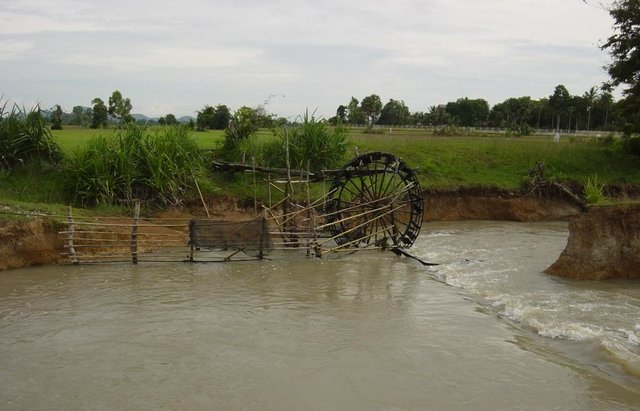
Irrigation of paddy fields using water-pumping wheels (Norias) [كمبوديا]
Norias are water-pumping wheels made of bamboo which are used to irrigate paddy fields in order to increase the yield.
- جامع المعلومات: Christoph Kaufmann
2. وصف نهج الإدارة المستدامة للأراضي
2.1 وصف موجز للنهج
A water user group, led by a committee staff, decides about the distribution of the water during the dry season to plant dry season rice.
2.2 وصف تفصيلي للنهج
وصف تفصيلي للنهج:
Aims / objectives: During the Pol Pot regime, a dam was built to catch and store water from a temporary stream to irrigate rice during the dry season. The dam degraded over time, therefore it was repaired by a NGO to provide water for the cultivation of dry season rice. To manage it, a water user group was formed. The aim of this water user group is to have a fair distribution of the water hold by the dam among the farmers located downstream. The water user group is led by an elected committee staff of 5 members, who are the direct contact persons for the individual farmers and village chiefs, as well as for the provincial department of hydrology.
Methods: A former local NGO, PRASAC (now a microfinance institute), which repaired the dam and gates, organised a meeting with the three concerned villages to elect a committee responsible for the management of the water. The committee, consisting of a chief, a vice-chief, a secretary and an accounting, and two managers of the gates (each responsible for one gate) is responsible for the fair distribution of the water. The chief is the contact person for the village chiefs or the farmers themselves, who can request water. He is the contact person for the provincial department of hydrology as well.
Stages of implementation: The water user group was elected in 2002, when the dam was fixed. A short training was given to the committee which was then left on its own for the management. After tensions that occurred between farmers, the committee asked for advice in the provincial department of hydrology, which was passed off to CDRI (Cambodia Development Resource Institute), a local NGO. The CDRI conducted meetings and acted as a mediator, since then no tensions occurred anymore between water users as they introduced weekly schedules.
Role of stakeholders: The chief and vice chief are responsible for the distribution of the water. The two gate managers are controlling the gates.
2.3 صور عن النهج
2.5 البلد/المنطقة/المواقع التي تم تطبيق النهج فيها
البلد:
كمبوديا
المنطقة/الولاية/المحافظة:
Kampong Chhnang
مزيد من التفاصيل حول الموقع:
Toeuk Phos
التعليقات:
A bit more than 100 ha are irrigated under this approach.
Map
×2.6 تواريخ بدء وإنهاء تنفيذ النهج
أشر إلى سنة البدء:
2002
سنة الإنهاء (إذا لم يعد النهج مطبقًا):
2003
2.7 نوع النهج
- قائم على مشروع/برنامج
2.8 الغايات/الأهداف الرئيسية للنهج
The Approach focused on SLM only
A fair distribution of water among the farmers, to produce rice during the dry season as well.
The SLM Approach addressed the following problems: The approach was designed to avoid conflicts on the use of water resources, and to allow rice production during the dry season.
2.9 الظروف التي تمكن أو تعيق تنفيذ التقنية/التقنيات المطبقة بموجب النهج
توفر/الوصول إلى الموارد والخدمات المالية
- معيق
The staff works on a voluntary basis.
Treatment through the SLM Approach: The gate managers catch fish at the gates while releasing water which provides an income. The chief records the water levels behind the dam for the provincial department of hydrology, which provides an income to him.
الإطار القانوني (حيازة الأراضي، وحقوق استخدام الأراضي والمياه)
- معيق
Conflicts between farmers about water use. The lower villages did not get enough water.
Treatment through the SLM Approach: A NGO, CDRI, acted as a mediator in the conflict. Since then no more tensions occurred as they introduced weekly schedules.
The existing land ownership, land use rights / water rights hindered a little the approach implementation Before there was open access to water, but no water was available since the dam was broken. Now there is water, but it is regulated.
3. المشاركة وأدوار الأطراف المعنية
3.1 أصحاب المصلحة المعنيون بالنهج وأدوارهم
- مستخدمو الأراضي المحليون/المجتمعات المحلية
Villagers and village chiefs
The operation of the water gates needs a strong physical condition. The literacy of women is lower than the one of men. Only male staff.
Poor people were also involved, and use the water.
- متخصصون في الإدارة المستدامة للأراضي / مستشارون زراعيون
- منظمة غير حكومية
PRASAC implemented the water user group.
- الحكومة الوطنية (المخططون، صانعو القرار)
Provincial department of hydrology
3.2 انخراط مستخدمي الأراضي المحليين/المجتمعات المحلية في المراحل المختلفة للنهج
| انخراط مستخدمي الأراضي المحليين/المجتمعات المحلية | حدد من شارك وصف الأنشطة | |
|---|---|---|
| المبادرة/التحفيز | غير موجود | |
| التخطيط | غير موجود | |
| التنفيذ | سلبي | The committee was elected, and acts until today. |
| الرصد/التقييم | غير موجود | |
| Research | غير موجود |
3.3 مخطط التدفق (إذا كان متاحًا)
الوصف:
Organogram of the different stakeholders in the water user group in Toeuk Phos.
المؤلف:
Stefan Graf (Centre for Development and Environment)
3.4 اتخاذ القرار بشأن اختيار تقنية/تقنيات الإدارة المستدامة للأراضي
حدد من الذي قرر اختيار التقنية/التقنيات التي سيتم تنفيذها:
- متخصصون في الإدارة المستدامة للأراضي بمفردهم
اشرح:
The former NGO, PRASAC, fixed the dam that was constructed during the Pol Pot regime. The farmers had to be persuaded to plant dry season rice.
Decisions on the method of implementing the SLM Technology were made by by SLM specialists alone (top-down). The NGO decided that the water user group should be managed that way, organised an election and the same staff works since then.
4. الدعم الفني وبناء القدرات وإدارة المعرفة
4.1 بناء القدرات/التدريب
هل تم تقديم التدريب لمستخدمي الأراضي / الأطراف المعنيين الآخرين؟:
نعم
حدد من تم تدريبه:
- مستخدمو الأراضي
- موظفون ميدانيون/ مستشارون
شكل التدريب:
- في العمل
- مناطق العرض
المواضيع المغطاة:
Growing of dry season rice. The Provincial Dept. of Agriculture rented 100 ha and planted dry season rice. Since then the farmers plant it by themselves.
The staff was trained to work alone managing the water gates.
4.2 خدمة استشارية
هل يملك مستخدمو الأراضي وصولا إلى خدمة استشارية؟:
نعم
حدد ما إذا كانت الخدمة الاستشارية متوفرة:
- في مراكز دائمة
وصف/تعليقات:
In case the chief is confronted with a problem, he approaches the Provincial Department of Agriculture. The chief is then either redirected to a NGO or gets help by the Provincial Department of Agriculture.
Advisory service is inadequate to ensure the continuation of land conservation activities; The committee staff provides the water for free, the maintenance costs have to be financed by the provincial dept. of hydrology. PRASAC provided a financial reserve for the maintenance somewhere in the government, but neither the water user group chief nor the secretary/accountant know where this account is.
4.3 تعزيز المؤسسات (التطوير التنظيمي)
هل تم إنشاء أو تعزيز مؤسسات من خلال هذا النهج؟:
- لا
4.4 الرصد والتقييم
هل يشكل الرصد والتقييم جزءا من النهج؟:
نعم
التعليقات:
Bio-physical aspects were regular monitored by project staff through measurements; indicators: Water level is monitored daily by committee chief, data reported to provincial dept. of hydrology.
There were few changes in the Approach as a result of monitoring and evaluation: Weekly schedules were established to avoid conflicts between villages. CDRI was working as a mediator.
There were no changes in the Technology as a result of monitoring and evaluation
4.5 البحوث
هل كانت البحوث جزءًا من النهج؟:
كلا
5. التمويل والدعم المادي الخارجي
5.1 الميزانية السنوية لمكون الإدارة المستدامة للأراضي في النهج المذكور
التعليقات (على سبيل المثال المصادر الرئيسية للتمويل/الجهات المانحة الرئيسية):
Approach costs were met by the following donors: national non-government (PRASAC): 100.0%; local community / land user(s) (Staff consists of volunteers )
5.2 الدعم المالي/المادي المقدم لمستخدمي الأراضي
هل حصل مستخدمو الأراضي على دعم مالي/ مادي لتنفيذ التقنية/ التقنيات؟:
كلا
5.3 إعانات لمدخلات محددة (بما في ذلك العمالة)
- بنى تحتية
| حدد المدخلات التي تم دعمها | إلى أي مدى | حدد الإعانات |
|---|---|---|
| Dam and gates | ممول بالكامل | |
إذا كان العمل من قبل مستخدمي الأراضي مدخلاً جوهريًا، فهل كان:
- تطوعي
التعليقات:
the water user group staff works for free.
5.4 الائتمان
هل تم توفير ائتمان في إطار نهج أنشطة الإدارة المستدامة للأراضي؟:
كلا
6. تحليل الأثر والتصريحات الختامية
6.1 آثار النهج
هل ساعد النهج مستخدمي الأراضي على تنفيذ وصيانة تقنيات الإدارة المستدامة للأراضي؟:
- لا
- نعم، قليلا
- نعم، باعتدال
- نعم، إلى حد كبير
They are able to produce food during the whole year, with up to 3 rice harvests a year on the same fields.
هل ساهم النهج في تمكين الفئات المحرومة اجتماعيا واقتصاديا؟:
- لا
- نعم، قليلا
- نعم، باعتدال
- نعم، إلى حد كبير
Landless farmers have more work, as 3 rice harvests are produced per year.
هل أدى النهج إلى تحسن في مسائل حيازة الأراضي / حقوق المستخدمين التي أعاقت تنفيذ تقنيات الإدارة المستدامة للأراضي؟:
- لا
- نعم، قليلا
- نعم، باعتدال
- نعم، إلى حد كبير
According to the committee chief, no more tensions occur now.
Did other land users / projects adopt the Approach?
- لا
- نعم، قليلا
- نعم، باعتدال
- نعم، إلى حد كبير
A fourth village joined the water user group.
Did the Approach lead to improved livelihoods / human well-being?
- لا
- نعم، قليلا
- نعم، باعتدال
- نعم، إلى حد كبير
The technology (the dam with gates) helped. But it would not work without the approach. It improved the food production, thus food security, and the livelihoods of the farmers.
Did the Approach help to alleviate poverty?
- لا
- نعم، قليلا
- نعم، باعتدال
- نعم، إلى حد كبير
It helped to alleviate poverty among the farmers owning land in the irrigated areas as they can produce more.
6.2 المحفز الرئيسي لقيام مستخدمي الأراضي بتنفيذ الإدارة المستدامة للأراضي
- زيادة الإنتاج
Three harvests instead of only one.
- well-being and livelihoods improvement
Three harvests instead of only one.
6.3 استدامة أنشطة النهج
هل يمكن لمستخدمي الأراضي المحافظة على استدامة ما تم تنفيذه من خلال النهج (بدون دعم خارجي)؟:
- غير مؤكد
إذا كان الجواب لا أو غير متأكد، حدد ذلك وعلق عليه:
It is unclear what would happen if the dam needs maintenance but the provincial dept. of hydrology would not be willing to pay the maintenance costs.
6.4 نقاط قوة/مزايا النهج
| نقاط القوة/ المزايا/ الفرص من وجهة نظر مستخدمي الأراضي |
|---|
|
Improved livelihoods, three times more rice production and water vegetables as well as fish during the whole year. |
| No pumps are needed. |
| Farmers help each other with the water. (How to sustain/ enhance this strength: Regular meetings. ) |
6.5 نقاط الضعف/ العيوب في المنهج وطرق التغلب عليها
| نقاط الضعف/ المساوىء/ المخاطر من وجهة نظر مستخدم الأراضي | كيف يمكن التغلب عليها؟ |
|---|---|
| There is no money for maintenance activities. | |
| Nobody wants to work as committee staff as they don’t get any salary for this work. |
| نقاط الضعف/ المساوىء/ المخاطر من وجهة نظر جامع المعلومات أو غيره من الاشخاص الرئيسيين لمصدر المعلومات | كيف يمكن التغلب عليها؟ |
|---|---|
|
No regular elections, nor bottom up improvements. Everything comes from outside. |
7. المراجع والروابط
7.1 طرق جمع/مصادر المعلومات
- زيارات ميدانية، مسوحات ميدانية
- مقابلات مع مستخدمي الأراضي
الروابط والوحدات المواضيعية
توسيع الكل طي الكلالروابط

Irrigation of paddy fields using water-pumping wheels (Norias) [كمبوديا]
Norias are water-pumping wheels made of bamboo which are used to irrigate paddy fields in order to increase the yield.
- جامع المعلومات: Christoph Kaufmann
الوحدات المواضيعية
لا يوجد وحدات مواضيعية


